We know that penguins live in a freezing climate environment like Antarctica, but we may have a question, do penguins live in a warm climate?. Yes, researches on penguins proved that only around four to five species of penguins survive in Antarctica and surrounding islands.
Rest of the species distributed throughout the world. Some of them are living in warm climates like temperate zones of the equator. Let’s see which penguins are living in a mild climate.
Galapagos Penguins (Spheniscus Mendiculus)
Galapagos penguins live in the Galapagos Archipelago in South America. The only penguins found in the north of the equator are Galapagos penguins. These species can survive in warm temperatures where the surface temperature of cold water varies between 590 to 820 F.
Humboldt and Cromwell currents of the cold water strongly bonded these penguins to live in Galapagos. Most of these penguins, i.e., around 90% of these penguins survive in Islands of Fernandina and Isabela.
Some researches on these penguins say that they have endangered because they left with only 1,000 breeding pairs. These are the smallest species among the Spheniscus or banded group of penguins.
These penguins weigh less than 5-6 pounds. They mainly feed on small fish, sardines, mullet, and other tiny organisms. They don’t breed when the supply of food is less as well as when the waters are warm.
They have a unique adaptation even to cool themselves. By stretching the flippers, by covering their feet from the sun rays, by humping ( round one’s back by bending forward and drawing the shoulders forward) their body, and swimming under deep water.
To cool the respiration system and throat, they evaporate themselves by more panting (quick breath). They protect their young one or eggs from the heavy hot sun by keeping them under the rock cave-like nest.
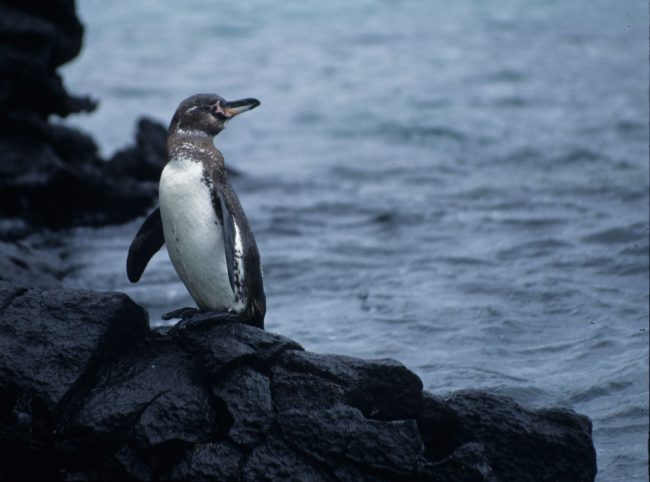
Magellanic Penguins (Spheniscus Magellanicus)
Magellanic penguins are the only penguins among Spheniscus or banded penguin groups that migrate. Magellanic penguins majorly found in South America, like coasts of Chile and Argentina, as well as in the Falkland Islands.
Their height is about 2 feet and weighs around 11 pounds. These are the only banded penguin species that hunt food offshore. Their population is approximately 1,300,000 breeding pairs. They get familiarities in looks with African penguins.
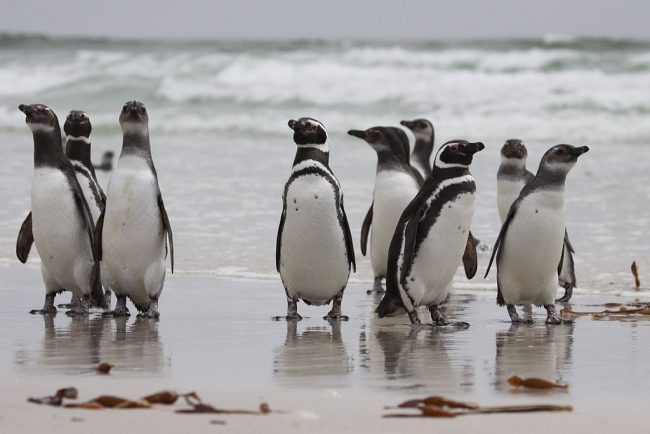
They form enormous colonies for nesting. They build nests with a tunnel dug or under bushes. They mate for life. Their incubation period will end for 40-42 days.
Here both the parents take responsibility for incubation, like 10-15 days shifts. They mainly feed on fish like sardines, cuttlefish, anchovies, krill, squid, and other small fish.
African Penguins (Spheniscus Demersus)
These species of penguins also called ‘jack-ass penguins’ because of their located louder calls, which sounds like donkey brays. These have synonym name ‘black-footed penguins.’ They live on the south-west coast of Africa. They have a population of around 52,000 adult penguins.
Their height is 2 feet and weighs approximately 7 pounds. They spend most time under the sea; at night, they get back to their home. Their nests are made up of burrows with coastal rock cliffs.
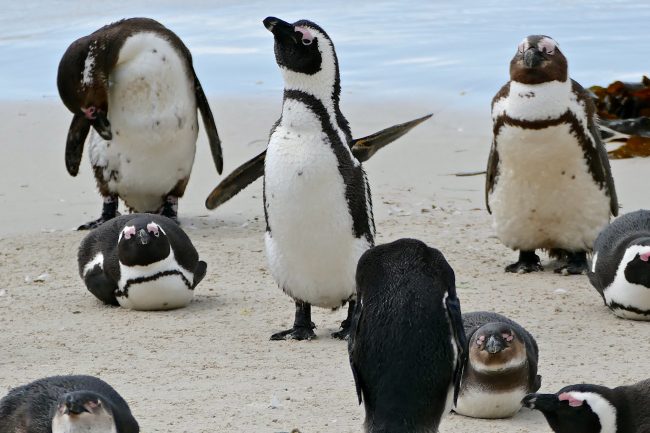
As the name indicates, they have black feet. They form a massive colony for nesting. They have a special gland above the eyes, which is pink in color, helps to cool the body during hot weather. When the temperature rises, the surrounding air helps to cool the blood that sent to this gland.
They have an oil gland at the base of their tail, penguins using beaks preen their feathers with oil, because the oil keeps their feathers waterproof. They feed on anchovies, squid, and other small fish.
Humboldt Penguins (Spheniscus Humboldti)
These penguins belong to the group called ‘banded penguins.’ These penguins live in the islands of western South America and coasts of Peru as well as Chile. These grow up to a height of 2 feet and weighs around 9 pounds. Their population is approximately 2,500 to 9,999 individual penguins. They feed on fish like sardines, anchovies, and they usually hunt near the shore.
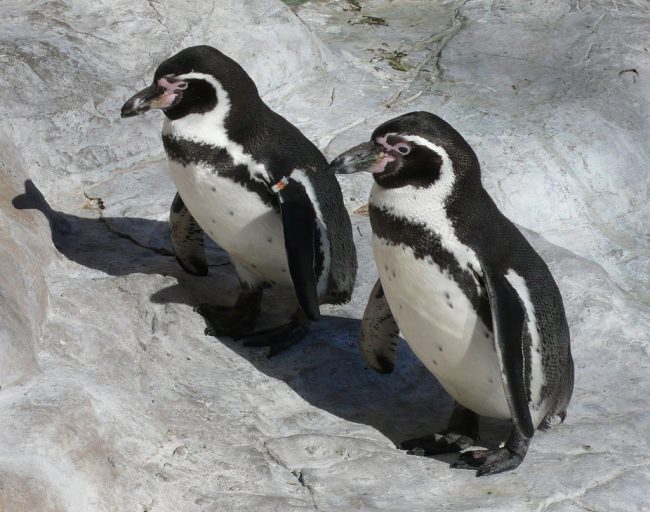
Little Penguins (Eudyptula Minor)
This group consists of the smallest species among all penguins; they are a fairy or blue penguins. These penguins mostly found in coasts of New Zealand, Chatham Islands, and south coasts of Australia. Their body is blue color, so they are known as blue penguins.
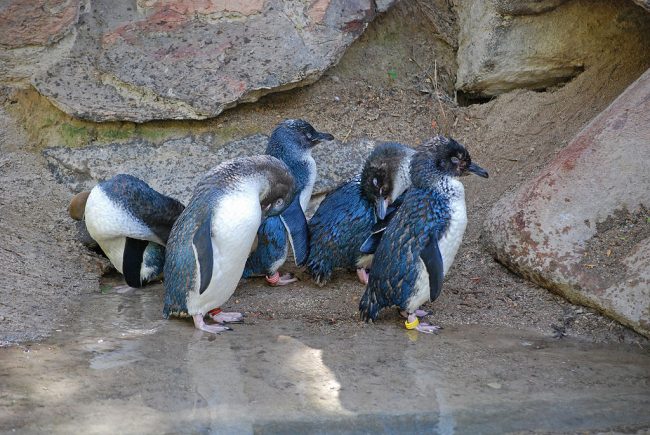
Their population is less than 1 million individuals. Their height is just 16 inches, and body weight is around 2 pounds. In coastal burrow or tunnel dug, they spend most of the daytime, and they also breed in this place. During the night, they go hunting in search of small fish near the shore.
Conclusion
Finally, we can say, penguins not only live in a cold climate, but they also survive in a warm environment. Penguins of the Spheniscus family also named the banded group of penguins like Galapagos, Magellanic, Humboldt, and African sustain in the mild climate. Along with this, the smallest species among all named fairy or little blue penguins can live in a warm environment.
Reference:
https://seaworld.org/animals/all-about/penguins/appendix/
https://animals.mom.me/warmest-climate-penguin-lives-2850.html
http://worldsafaris.com/blog/warm-weather-penguins